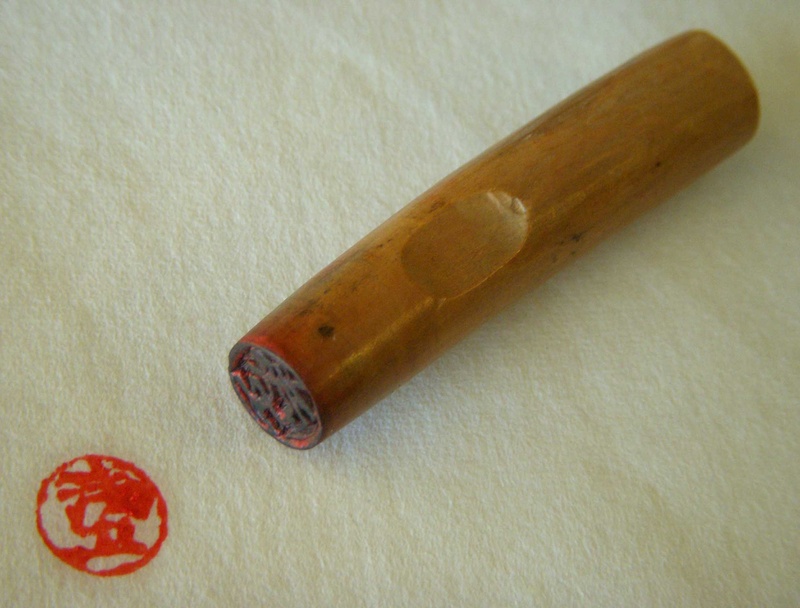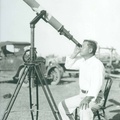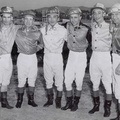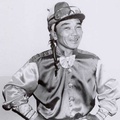Cultural Heritage and Assimilation
The names that immigrant parents select for their American-born children say something about culture, customs, hopes, and dreams.
In a previous article I wrote about the popularity of the name George for Nisei boys. Most of them were named after George Washington. But some of them were actually named after the reigning sovereign of Great Britain at the time of their birth, such as actor and activist George Takei who was named after King George VI.
Names can reflect a desire among Issei to maintain a cultural connection and sense of pride in their Japanese heritage. Heihachiro was the personal name of a Nisei from Brawley who went by the nickname Hach. He was named after Admiral Togo Heihachiro. Admiral Togo (1847-1934) defeated the Russian fleet during the Russo-Japanese War and became Japan’s most world-renowned national hero.
My aunt Teruko was named after Teru-no-miya, the eldest daughter of Emperor Hirohito and Empress Nagako. My grandmother selected a royal name for her because my aunt was born on November 3, which was Emperor Meiji’s birthday. When my grandmother was a young girl growing up in Hiroshima, Emperor Meiji’s birthday was a major national holiday called Tenchōsetsu.
A Nisei’s name can even be a product of superstitions that the Issei generation carried with them from the old country. Kay Kawashima was originally named Katsuyoshi (勝義) meaning “righteous victory.” But as a child he was asthmatic and thin. Fearing that her son was sickly because he was jinxed for having a name that was too good for him, Sone Kawashima changed his name to one that was more conciliatory. And Kay’s health did improve!
But more Nisei names reveal their immigrant parents’ desire to assimilate into their adopted country, or at least to show that their native-born children were true Americans. Nobody can deny that the best example of this is Betsy Ross Mayeda, a Nisei born in El Centro, California, on the Fourth of July!
In addition to the Georges, I have met Nisei who were named after a spattering of U.S. presidents. There is Lincoln Nagato whose older brother, Fumitake, was killed in action during World War II as a member of the 442nd Regimental Combat Team and was the first Nisei buried in Arlington National Cemetery. Frank Sata’s full name is Franklin. He admits that he was named after FDR, but that was eight years before the signing of Executive Order 9066. Because Hoover Jiro Uchizono grew up to become a staunch Democrat, he insists on going by his Japanese middle name rather than Hoover, the Republican president at the time of his birth.
Numerical Names
I knew a lady named Hifumi (一二三). Her name was written with the kanji characters for “one,” “two,” and “three.” I never did ask her the significance of her name but I wish that I had.
When numbers are incorporated into personal names, they are typically – but not always – ordinal. There was an Issei produce shipper in Brawley named Yuhachi Miyagi. He was the eighth son in his family. The seventh son of the Miyagi family also lived in the Imperial Valley. His name was spelled Yuhichi. Each son’s name began with the root element “yu” (友) followed by the number denoting his order of birth. A list of their names gives us a convenient lesson in how numbers are written in Japanese!
友一
友二
友三
友四
友五
友六
友七
友八
Taro (太郎), Jiro (次郎), Saburo (三郎), Shiro (四郎), and Goro (五郎) are ordinal names that correspond to first son, second son, third son, fourth son, and fifth son, respectively. Brawley Issei Tomosuke Uchizono had four sons whom he duly named: Taro, Hoover Jiro, Roy Saburo, and Alfred Shiro.
Ordinal names can stand alone (as in the case of the Uchizono brothers) or they can be added as a suffix to a root element, such as my grandfather’s name Zentaro (善太郎). And as illogical as it sounds, it should be borne in mind that ordinal names do not necessarily denote the order of one’s birth. My grandfather was named Zentaro even though he was the second-born son in his family. Goro Fujiwara, whose father owned a dairy in Calexico, California, was indeed the fifth son as his name indicates. But his older brother, Hachiro, was the third son, not the eighth. There was a farmer in the Imperial Valley named Sangoro (三五郎) Hori, which begs the question: Was he the third or fifth son? In all likelihood, he was neither.
Women’s Names
Two distinct characteristics differentiate the names of Issei and Nisei women marking a clear dividing line between the generations. First, the overwhelming majority of the personal names of Issei women do not end with the suffix –ko. Of the hundreds and hundreds of Issei women’s names that I have come across, I bet that I could count on one hand those that do end with –ko.
The reverse is true of Nisei women. My mother came from a family of eight girls. She and her seven sisters all had names that ended with –ko. This reflects what was fashionable at the time. Off the top of my head, I can think of only two Nisei women whom I knew who did not have such a name. And interestingly, their names are gender neutral: Kaoru and Misao.
Secondly, most Issei women, as was the custom among women in Japan of that era, wrote their names in katakana (one of the writing systems comprised of phonetic syllabaries), rather than kanji. My maternal grandmother’s name was Komeno (コメノ). Her daughters on the other hand, like almost all Nisei, had kanji characters assigned to their names (even though some of them may not have been aware of that fact). They were: Shizuko (静子), Nobuko (信子), Teruko (照子), Kiyoko (清子), Hideko (秀子), Yetsuko (悦子), Toyoko (豊子), and Yaeko (八重子). When family and friends spoke to them, the –ko suffix was usually dropped. My mother, Kiyoko, went by Kiyo. (We do not know why but my grandfather expressly wanted my aunt Yetsuko’s name to be spelled with a “y,” the standard romanization is Etsuko.)
The –ko suffix (子) has come to mean “child.” So my mother would have said that her name meant “a pure child.” But historically –ko was an aristocratic suffix derived from an ancient court title, and its use was reserved only for women of the nobility.
It seems ironic that Issei women were from Japan and yet their names were written in the phonetic syllabaries that are now used primarily for non-Japanese words, while Nisei women were born in America yet their Japanese names had kanji characters.
© 2017 Tim Asamen






